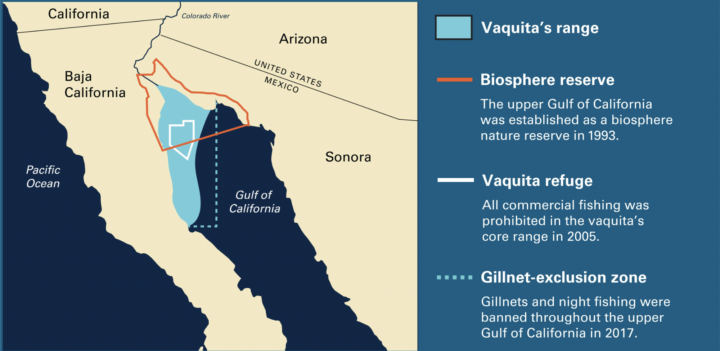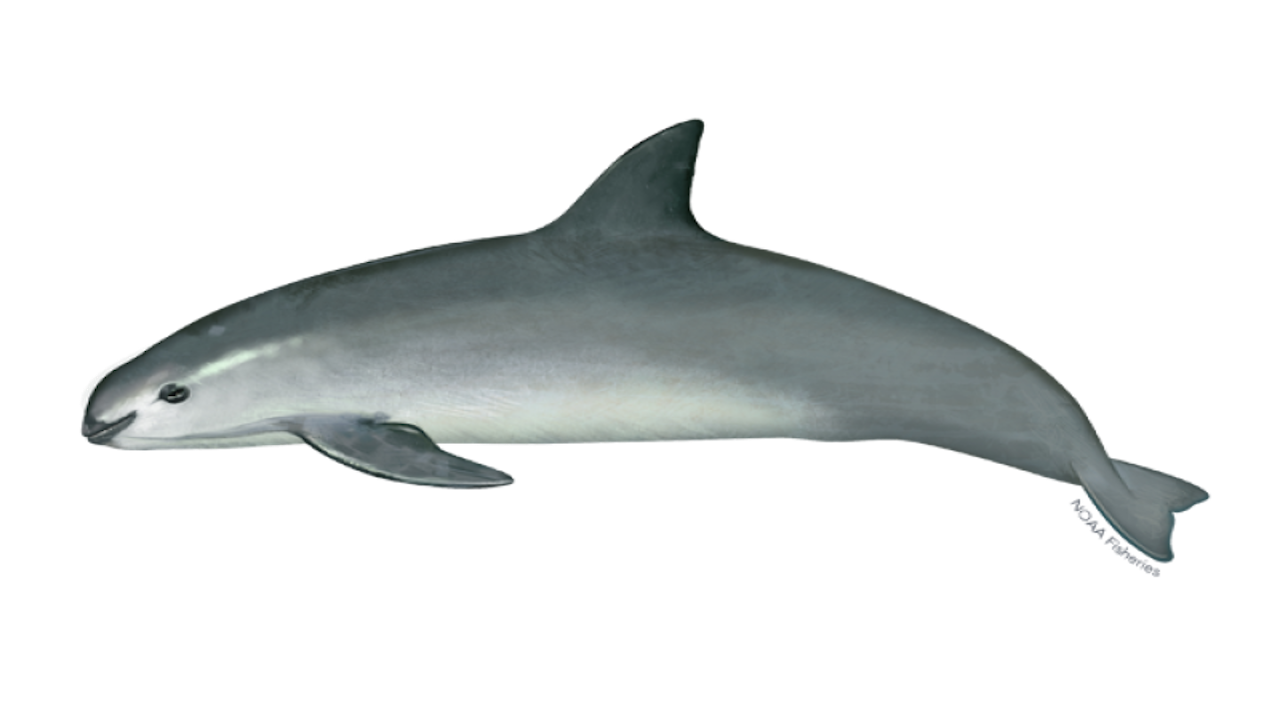The World’s Most Endangered Species and Sustainable Fishing
To some, the extinction of species may appear unnoticeable and way off in the future, but for some species we are seeing it happen right in front of our eyes. A prime example of this is the seemingly impending extinction of the vaquita, a rare type of porpoise.
The vaquita is the world’s rarest marine mammal. This animal has the smallest range of any porpoise, with its small habitat only spanning the Northern Gulf of California, the body of water that separates the Baja California peninsula from the rest of Mexico’s mainland. The vaquita is only about five feet long, has a rounded head and no beak, unlike dolphins. They are often characterized by the black patches around their eyes and lips. Additionally, they have triangle shaped dorsal fins on their backs, which possibly allows them to reduce body temperatures in warmer waters such as the Gulf of California where they live.
So why is the vaquita an example of the inevitability of extinction? From 1997 to 2008, the vaquita population fell from an already dwindling 600 individuals to just 200. That was fifteen years ago; now, scientists are estimating that there are only 10 or so vaquita left on the planet, and it is possible that the number could go down to zero very soon.
The Gulf of California is full of a wide range of species of fish and shrimp, which are not only to the tastes of vaquita but humans as well. The fish that people are targeting most, and the main reason why the vaquita population has dropped so dramatically in the past few decades, is the totoaba. The totoaba, which is a similar size to the vaquita, had been overfished in the 1970s to the point where they also became endangered and the fishing of totoaba eventually became illegal. They are fished so intensely because their swim bladder, which is a gas-filled organ that allows fish to control their buoyancy, is extremely valuable in China for medicinal purposes.
However, this doesn’t just affect totoaba. Fisheries use gillnets to catch totoaba, which is a type of large net that hangs down and is meant to only catch a certain size of fish. Read this short article to find out more about how gillnets work! While fishing gear like gillnets catch great quantities of fish in the most effective manner, they can be some of the most unsustainable because of unintentional bycatch of many other species, including other fish as well as marine mammals. Bycatch is the accidental catching of unwanted fish or other sea creatures in the same nets– they are usually discarded once on the boat or may end up dying because of entanglement in the net or drowning in the case of marine mammals. It is very difficult to estimate the amount of bycatch, which makes it easy for commercial fishing companies to ignore its ramifications and continue unsustainable fishing practices. In fact, “while bycatch data is often outdated and inaccurate, researchers estimate that 17-22 percent of U.S. catch is discarded every year, according to the best available data. Bycatch in the U.S. could amount to 2 billion pounds every year, equivalent to the entire annual catch of many other fishing nations around the world.” Totoaba are a pretty similar size to vaquita, so the gillnets are a size where they will unintentionally get caught by mistake when fisheries are looking for totoaba. This is the main reason why vaquita are dying off, so various conservation groups have been pressuring the Mexican government to enforce some sort of change regarding the protection of the vaquita as well as more sustainable fishing practices, which also has a larger indication in sustainability than just vaquita.
In Mexico, the government has attempted to make totoaba fishing illegal; however, the demand of the trade in China fuels fishers to continue to fish for this endangered species, thus increasing the chances of killing more vaquita. Recently, there has been further action to increase efforts to protect vaquita. The Sea Shepherd Conservation Society, a nonprofit dedicated towards the preservation of oceans and marine life, signed an agreement in early October expanding the area of Vaquita protection under Operation Milagro, which “protects the Zero Tolerance Area of the UNESCO-recognized Vaquita Refuge from the illegal fishing gear that ensnares and kills the endangered Vaquita”. This operation is a partnership between the government and Sea Shepherd to keep the area free of illegal fishing nets.

Photo by Smithsonian Institution
This issue is not only relevant to species extinction but the sustainability of the fishing industry. Gillnets increase the chance of bycatch which leads to harmful waste of unwanted fish as well as killing non-target species. Nonprofits such as Sea Shepherd are pushing for alternative methods for fishing that are more sustainable. It is unsure whether the small population of vaquita will be able to withstand these pressures, but further enforcement by the government and a transition to a more sustainable fishing industry is necessary if there is going to be any chance of them recovering.
Written by Carmen Marshall ‘25
Photo by NOAA Fisheries

